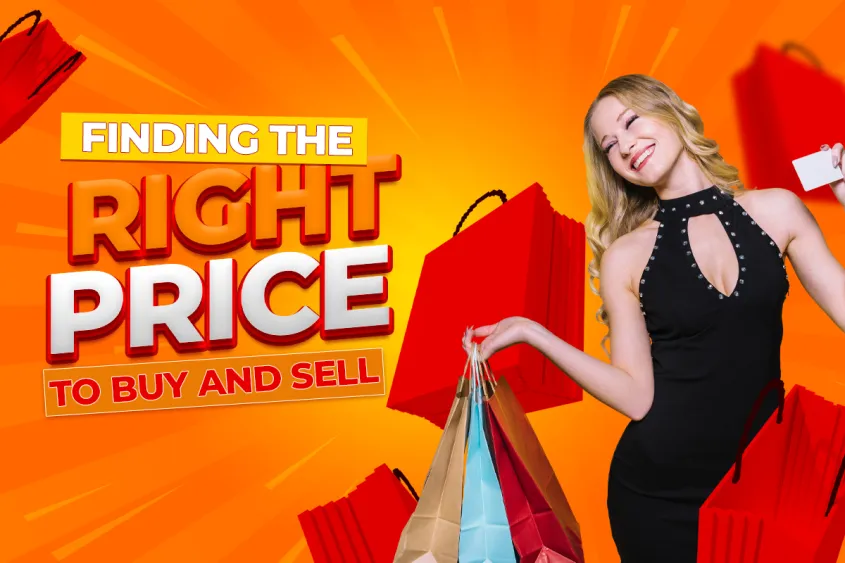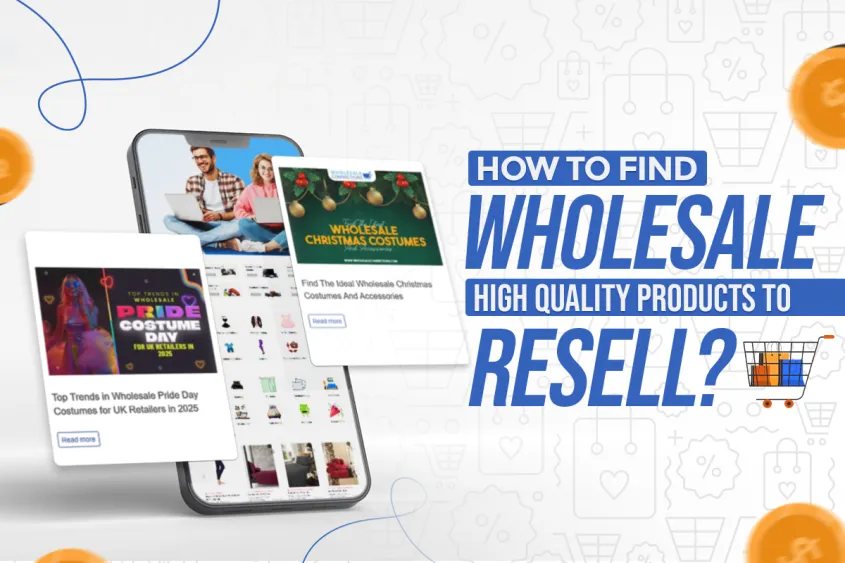Starting a reselling business today can be exciting, challenging, and full of learning moments. One of the biggest puzzles is figuring out where to get high-quality products in bulk that you can resell confidently. In this fast-paced world, buyers are more aware, more informed, and more selective than ever. That means if you want to stand out, your products can’t just look good; they have to be genuinely reliable, honestly useful, and consistently valuable.
Finding these types of goods doesn’t come from guessing or rushing. It requires digging into your niche, understanding the people you’re selling to, and making smart, steady moves. And most importantly, it means working with the right sources, those who care about quality just as much as you do. Let’s walk through with Wholesale Connections about how to approach this journey, one meaningful step at a time.
What “High Quality Products” Really Means
The term “high quality” always gets tossed around, but what does it mean? At its heart, a high-quality product does what it promises, does it well, and keeps doing it over time. It doesn’t fall apart after a few uses. It doesn’t disappoint. It brings confidence to the person who bought it and to you, the person selling it.
For example, think about an item that feels firm, functions smoothly, and looks sharp. That’s the kind of product that not only creates satisfaction but also earns trust. Whether it’s something simple like a shirt or complex like a small device, quality lives in the small touches, the tight stitching, the clean seams, the polished surfaces, and the thoughtful design. These features add up and leave a lasting impression.
Looking at the Wholesale Market Through Real Eyes
Before jumping into buying anything, stop and study your space. What’s happening in your market right now? What are people looking for, talking about, and sharing with others? Being in touch with your audience gives you more than just direction; it gives you purpose.
A lot of fresh insight comes not from numbers but from conversations. Social platforms, niche forums, video reviews, and trending searches all reveal what people care about right now. If you’re tuned in, you’ll notice little shifts. For instance, maybe Cheap supplier are moving from flashy trends to more durable, high quality products. Maybe there’s a new interest in eco-friendly packaging. These aren’t just observations; they’re clues.
When you keep your ear close to what real people are saying, you start seeing patterns. Those patterns from any Reliable Wholesale Stores help guide your next step. Do people want more comfort? More style? More function? Once you know what’s missing, you can start thinking about how to fill that gap.
Spotting Suppliers You Can Rely On
A good supplier isn’t just someone who sells things. They’re someone who supports your business behind the scenes. You don’t just want the cheapest option; you want the smartest one. Price matters, yes, but trust, communication, and consistency matter even more.
When talking to a potential supplier, pay attention to how they respond. Are they clear with their answers? Do they reply quickly and helpfully? Can they show product samples or offer small-batch trial orders? These are all signs of someone who values doing good business.
A great supplier wants you to succeed because if you grow, they grow. This kind of partnership can lead to better pricing, early access to new items, or even help when something goes wrong. In short, the better your connection, the better your chances.
Testing Their Products Before You Commit
Never guess what you’re getting. Always try to test, touch, and try the products before you invest in them fully. This gives you a real feel, not just for how the high quality products look in a picture, but for how they perform in someone’s hands.
When your sample arrives, don’t rush through it. Take time to explore it like your customer would. Does it look clean? Does it feel sturdy? Does it do what it says on the label? Ask yourself if you’d be proud to sell it under your name.
Also, think about how this high-quality product compares to what’s already out there. Is it better? Is it just as good but cheaper? Does it bring anything fresh to the table? Your customers are comparing, so you should too.
Finding the Right Price to Buy and Sell

Buying low and selling high may sound simple, but it takes balance. You can’t just go for the cheapest item and hope it sells. You need to know what you’re paying and what your customers are willing to pay you.
Start by calculating your true cost, which includes not just the product but also shipping, taxes, customs, and even packing materials. Once you know that number, you can plan your selling price more clearly.
You want a fair profit, but you also want buyers to feel like they’re getting a good deal. The sweet spot is when both of you walk away happy. And that only happens when you understand every layer of your pricing.
Buying from a Business That Supports Growth
Great connections don’t come from one-time deals. They’re built from ongoing conversations, shared goals, and consistent experiences. A strong wholesale marketplace can bring a sense of stability to your whole operation.
When you have a connection that runs smoothly, things fall into place more easily. Orders arrive on time. Problems get solved faster. Opportunities open up. A supportive supplier such as Wholesale Connections becomes more than a name in your inbox; they become part of your business circle.
Good connections also mean better communication. If high-quality products run out or a new version arrives, they’ll often let you know. That gives you the edge, keeping you ahead of changes instead of catching you off guard.
Keeping Up with What’s Trending Now
Trends come and go, but the smart seller moves with them. That doesn’t mean chasing every new thing. It means watching carefully and adjusting when needed.
When you start noticing the same kind of product pop up again and again, on social pages, influencer feeds, or customer wishlists, it may be time to pay closer attention. Is this a fad? Or something gaining momentum?
Stay open to experimenting. Test a small batch of something trending. Let your customers try it and give feedback. The more flexible you are, the more chances you have to catch the wave early.
Shipping Without the Stress
Getting your products from point A to point B might sound easy, but the details matter. How long will it take? How much will it cost? What happens if something gets stuck or damaged?
If you’re dealing with b2b wholesale suppliers from overseas, you’ll need to think about customs, delays, and duties. These can add both time and cost. If you’re working with domestic sources, things move quicker but might cost more up front.
It’s about balance again. Weigh the costs, timeframes, and risks, then make the choice that works for you and your business. What matters most is that your buyer receives their order in perfect shape, in the promised time.
Putting Clear Agreements in Place
A good handshake is nice, but in business, written words matter more. Even a small misunderstanding can grow into a big problem if things aren’t clear from the start.
That’s why you need basic agreements. Maybe it’s an email that confirms price, shipping time, and product specs. Maybe it’s a more formal document. Either way, having something to look back on helps protect both sides. This step also shows you’re serious, and that usually makes your b2b supplier take things more seriously too.
Creating Smart Bundles That Add Value
One fun way to boost your high-quality products is through bundling. When two or three related items come together, customers often see more value. It’s a little trick of the mind, but it works.
Think about what people usually buy together. A case with a device. A brush with a balm. When the items make sense side by side, the bundle feels natural.
It also gives you a chance to move stock that might be slower on its own. When matched with a popular item, it gets more attention and more chances to sell.
Managing Inventory Like a Pro
Running out of stock or being buried under too much can both hurt your business. That’s why keeping a close eye on inventory is so important.
It doesn’t need to be complicated. Even simple software can track what’s coming in, what’s going out, and what’s sitting too long. When you know your numbers, you make better decisions.
Good tracking helps you plan, avoid delays, and keep your customers happy. It also keeps your money flowing in the right direction, not stuck in unsold boxes.
Conclusion
At the end of the day, your buying high-quality products is part of your story. When people buy from you, they aren’t just buying a thing; they’re buying trust. If that product holds up, they remember. If it fails, they remember that, too.
That’s why high quality matters so much. It builds your reputation. It creates loyalty. And it helps your business grow beyond one-time buyers.
The more trust you build, the less you have to convince people. They already believe in what you offer. They already want more. That’s the power of delivering value, time after time.




